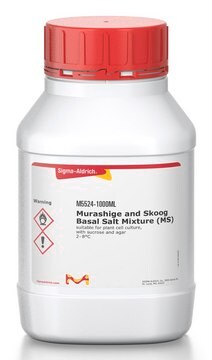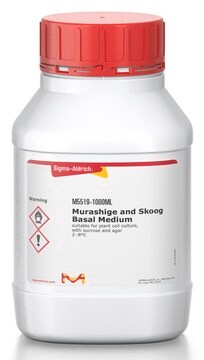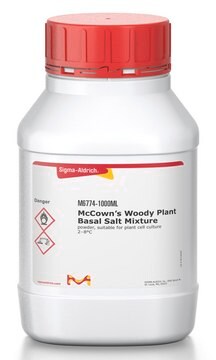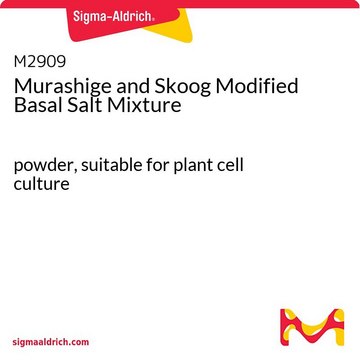H2395
Hoagland′s No. 2 Basal Salt Mixture
powder, suitable for plant cell culture
Synonyme(s) :
Hoagland solution 2
About This Item
Produits recommandés
Forme
powder
Niveau de qualité
Technique(s)
cell culture | plant: suitable
Application(s)
agriculture
Température de stockage
2-8°C
Application
- in the preparation of Hoagland′s solution for treating root tips
- to grow maize (Zea mays L.) seeds
- to grow rice seedlings and to treat M. sinensis (cv. Kosung) seedlings hydroponically
Variante de formule
Quantité
Produit(s) apparenté(s)
Mention d'avertissement
Danger
Mentions de danger
Conseils de prudence
Classification des risques
Acute Tox. 4 Oral - Eye Dam. 1 - Ox. Sol. 3
Code de la classe de stockage
5.1B - Oxidizing hazardous materials
Classe de danger pour l'eau (WGK)
WGK 2
Point d'éclair (°F)
Not applicable
Point d'éclair (°C)
Not applicable
Listes réglementaires
Les listes réglementaires sont principalement fournies pour les produits chimiques. Seules des informations limitées peuvent être fournies ici pour les produits non chimiques. L'absence d'indication signifie qu'aucun des composants n'est répertorié. Il incombe à l'utilisateur de s'assurer de l'utilisation sûre et légale du produit.
EU REACH SVHC Candidate List
EU REACH Annex XVII (Restriction List)
Faites votre choix parmi les versions les plus récentes :
Déjà en possession de ce produit ?
Retrouvez la documentation relative aux produits que vous avez récemment achetés dans la Bibliothèque de documents.
Les clients ont également consulté
Articles
Classical plant tissue culture media developed years ago by pioneers such as Murashige, Skoog, Gamborg, and others still play a vital role in plant tissue culture research today.
Notre équipe de scientifiques dispose d'une expérience dans tous les secteurs de la recherche, notamment en sciences de la vie, science des matériaux, synthèse chimique, chromatographie, analyse et dans de nombreux autres domaines..
Contacter notre Service technique
















